What Is Caravanserai?
Caravanserai are a symbol of the culture and history of the people of that country and are among the most popular tourist attractions of any country. Many foreign tourists visit these caravanserais when traveling to historical countries, including Iran. In the past, Iran’s caravanserais were often built by order of the kings to settle pilgrimage or commercial caravans on their journey in different regions of the country and often near big cities. If you are looking to discover the secrets behind the caravanserais, be sure to follow this article until the end so that we can provide you with interesting information about the caravanserais.
What Is Caravanserai?
Caravanserai is a term that refers to a place where travelers temporarily stay. Caravanserais in traditional Iranian architecture are significant from various aspects, including their typology, architectural elements, materials used, design, and construction timeframes, and they can be studied and analyzed.
These structures have played essential roles in trade, the distribution and sale of goods, cultural interactions, the dissemination of political news and economic information, and the residence of emirs and rulers during their travels.
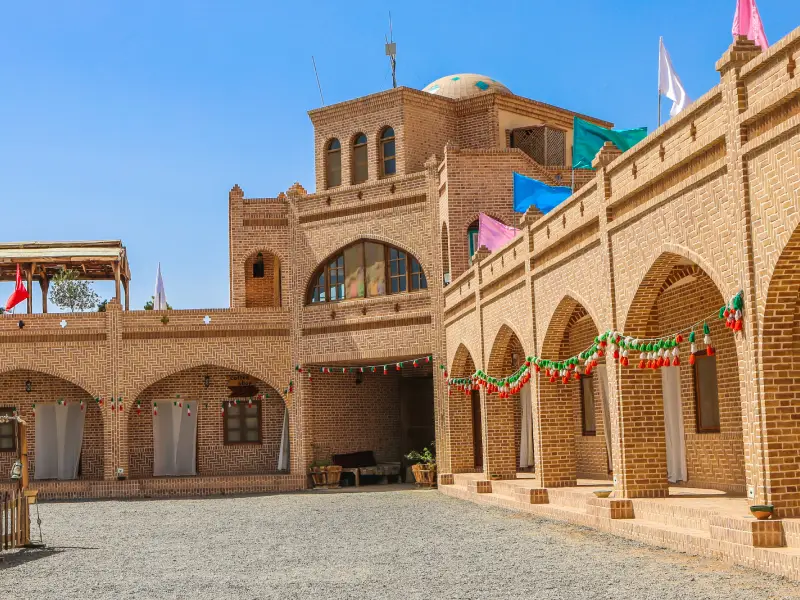
They are particularly important in military and strategic contexts, especially in border regions. Some urban caravanserais are considered hubs of commodity exchange, while the out-of-town caravanserais provide a haven for the protection and comfort of caravans.
In certain urban contexts, caravanserais have been referred to as centers of commodity exchange and a guesthouse in the East. In rural areas, they serve as secure locations for the protection and well-being of caravans.
Caravanserai Meaning
Caravanserai’s definition refers to large roadside inns or guesthouses for travelers. The term “Caravanserai” is derived from a combination of two words: “Caravan,” referring to a group of travelers, and “Sarai,” meaning a house or place.
Caravanserai is a word that signifies a specific type of resting place or inn for travelers. In addition to “Caravanserai,” several other words are used in various regions to describe similar structures, including “Caravankhana,” “Caravangah,” “Sara,” “Timcheh,” “Passage,” “Rabat,” “Sabbat,” and “Khan.”
However, it is important to note that not all of these terms share the same architectural features and characteristics as a traditional caravanserai.
Caravanserai Origin
The origin of caravanserais in Iran has a long and rich history. These structures were built along caravan routes to provide rest and shelter to travelers, with their construction dating back to various historical periods, especially during the Islamic era.
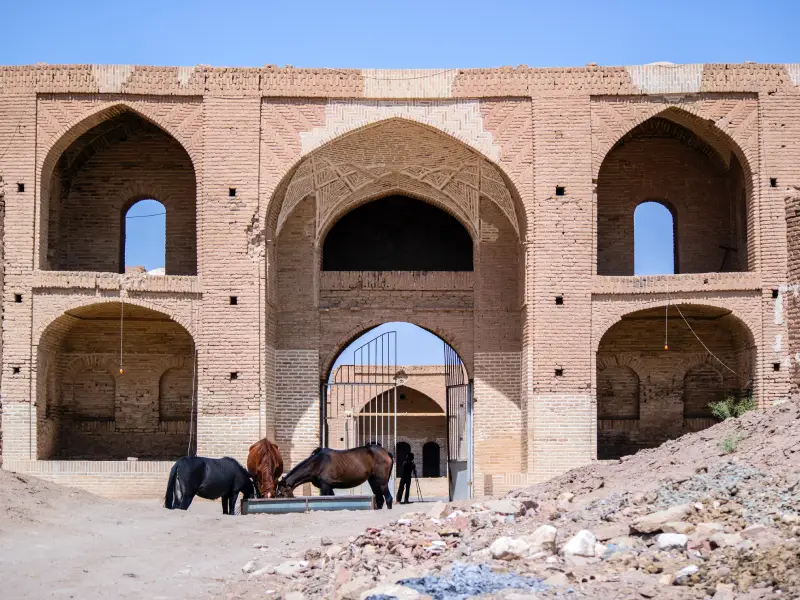
Many beautiful and fascinating examples of this type of architecture have survived, from the banks of the Aras River to the shores of the Persian Gulf.
These valuable buildings showcase the artistic taste and architectural skill of their builders, evolving and adapting over different historical periods to meet various needs.
Caravanserai Significance
Caravanserais hold great significance as they were vital hubs of trade, culture, and communication in ancient times. These historical structures provided shelter, safety, and sustenance to travelers and merchants along the Silk Road and other trade routes, fostering the exchange of goods and ideas between different regions and cultures.
Caravanserais facilitated economic growth, cultural diversity, and the spread of knowledge, making them essential in the development of a global economy.
Beyond their economic importance, caravanserais also served as meeting points where people from diverse backgrounds shared stories, traditions, and experiences, contributing to a rich tapestry of human history.
The Persian Caravanserai
The Persian Caravanserai served not only as a haven for travelers but also as a cradle of cultural exchange. These architectural marvels were strategically positioned along ancient trade routes, including the famed Silk Road, fostering not just trade but the transmission of ideas, languages, and traditions between East and West.
The caravanserai’s architectural features are awe-inspiring, with stunning decorative elements and courtyard layouts that offer a sense of community.
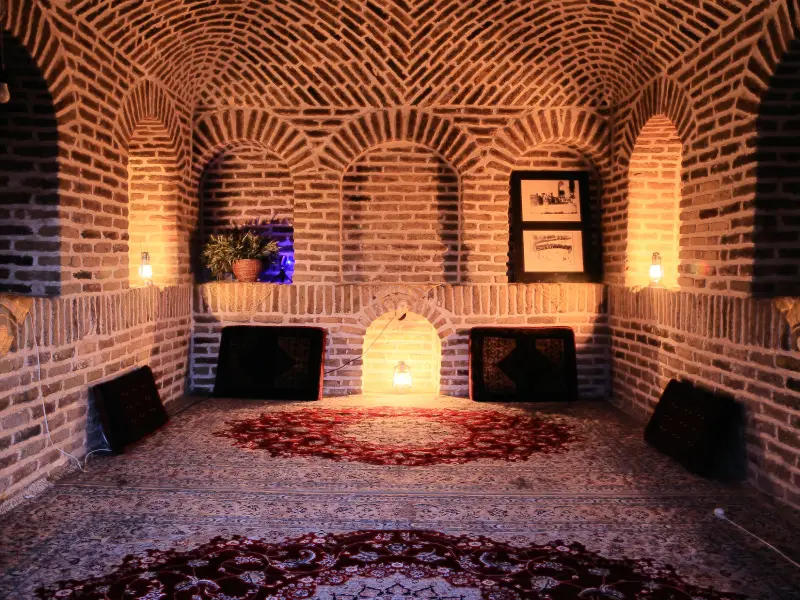
What sets them apart is their water supply systems, featuring canals, reservoirs, and underground channels, which kept both travelers and their animals hydrated in the arid landscapes.
Today, some caravanserais continue to operate as boutique hotels, allowing modern-day explorers to step back in time and experience the enchanting ambiance of these charming historic accommodations.
Caravanserai Time Period
Here are the periods:
Pre-Islamic Period
In the period before Islam, the first known form of roadside accommodations was called “Chapar Khaneh,” which eventually evolved into what we now recognize as caravanserais.
The primary function of these “Chapar Khaneh” was to provide a resting place for government messengers and to exchange tired horses with fresh ones.
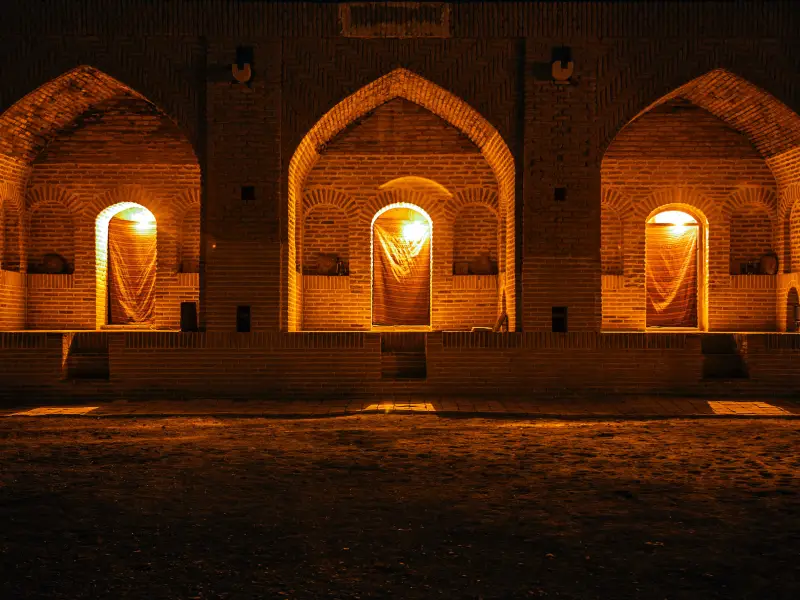
The history of these structures in Iran can be traced back to pre-Islamic times, including the Achaemenid era, when they were constructed primarily with raw bricks. Such buildings continued to exist until the Qajar period.
The earliest signs of caravanserai construction became evident during the Parthian period, particularly along the Silk Road, when these structures flourished.
During the Sassanian era, due to the economic prosperity in Iran, significant importance was placed on road construction and road security. Consequently, numerous caravanserais were built during this time, and a few remnants from this period still exist.
Post-Islamic Period
After the advent of Islam, the architectural styles and diversity of caravanserais gradually reached their zenith. Both out-of-town caravanserais and in-town caravanserais, known as “Robat,” were constructed along various routes, including city outskirts, rural areas, mountainous passages, and desert regions, each with distinct functional features.
With the arrival of Islam, two architectural styles from the Sassanian period blended. Caravanserais began to feature rooms for travelers around a central courtyard and wide stables were constructed behind to house four-legged animals. Each caravanserai typically had two or four iwans, which are large vaulted halls or chambers.
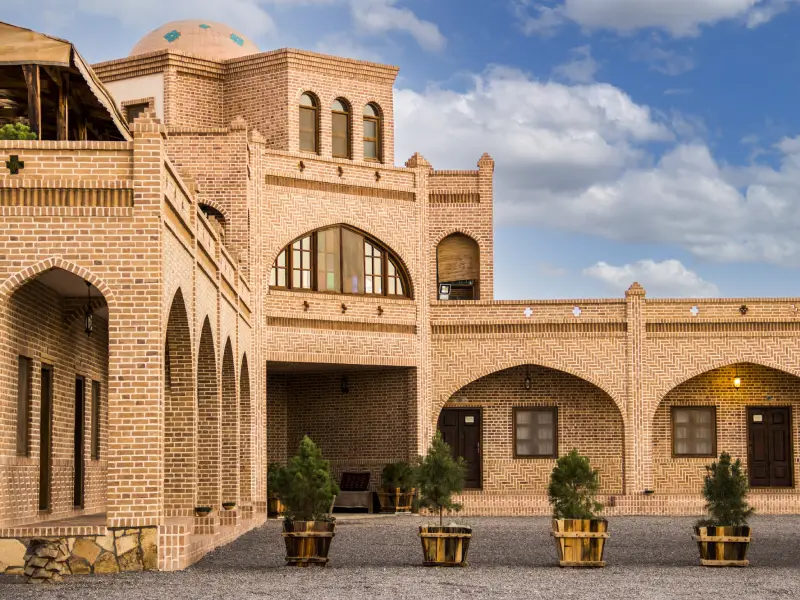
The evolution of caravanserais in Iran reflects the dynamic changes in architecture and the various functions they served, adapting to the needs of travelers and traders and changing economic and cultural contexts.
These structures not only provided shelter and safety but also contributed to the economic and cultural development of the regions they were located in.
What Is an Example of a Caravanserai?
One notable example of a caravanserai is the “Qasr-e Bahram Caravanserai,” located in Semnan province, Iran, within the area known as the Kavir National Park. It is considered one of the oldest and most beautiful caravanserais in Iran.
The history of this caravanserai is believed to date back to both the Sassanian era, during the reign of King Bahram, and the Safavid Empire period.
The Caravanserai of Qasr Bahram has a rectangular shape, with a spacious eight-sided courtyard and over twenty chambers around its perimeter.
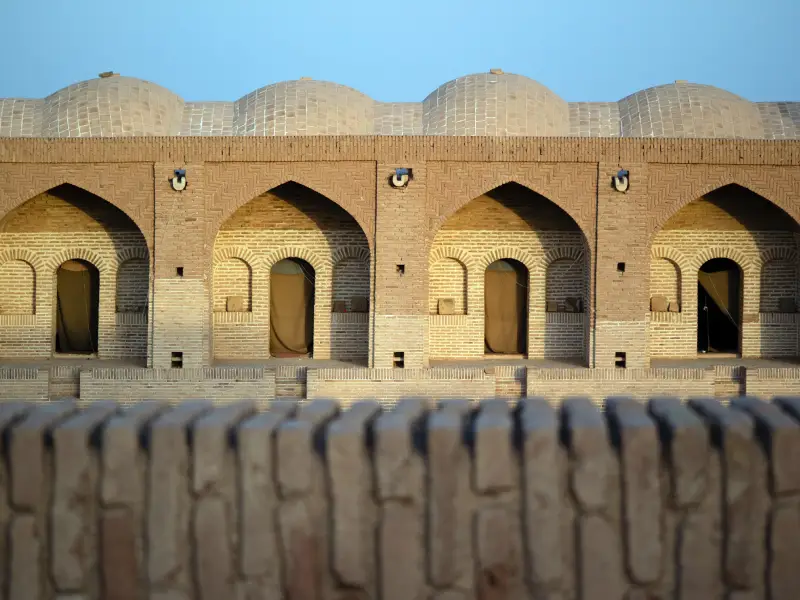
Some of these chambers have platforms that serve as ovens, allowing travelers to prepare their meals. In the center of the courtyard, there is a beautiful pool into which water from the clay pipes used to flow.
The caravanserai has two entrances, one on the north side and the other on the south side. The courtyard features four iwans, one of which was used by the Shah, adorned with simple yet beautiful alcoves.
Behind the chambers, there were areas for the resting of the travelers’ animals, and the site included towers on all four sides that were used for guarding and protecting the caravanserai.
Today, the Caravanserai of Qasr Bahram serves as a guesthouse within the Kavir National Park. It attracts groups interested in environmental and astronomical observation who utilize its beautiful rooftop for stargazing in the mesmerizing desert sky.
What Would We Call Caravanserai Today?
Today, caravanserais have largely turned into different types of lodging and accommodation facilities to meet the needs of modern travelers.
Depending on the specific location and services provided, these establishments can be called by various names, including:
- Hotels: In many urban and tourist areas, caravanserais have transformed into modern hotels that offer a range of amenities, from basic to luxury.
- Motels: Along highways and in less urbanized regions, you might find motels, which serve as convenient resting places for travelers, often with parking facilities for vehicles.
- Inns: Some traditional inns still exist, especially in rural areas, offering comfortable lodging and dining options for travelers.
- Guesthouses: In remote or cultural heritage areas, former caravanserais may have been converted into guesthouses, providing a more local and authentic experience.
Conclusion
Caravanserai is considered a part of the history and civilization of historical countries, including Iran. Most Iranian caravanserais were built by order of the Safavid kings, especially Shah Abbas. In the past, caravanserais played an important role in Iran’s economic prosperity and were the place of many foreign merchants. Visiting these caravanserais and seeing the architecture of these valuable buildings is fascinating and informative for all history lovers. Visiting these historical residences is worth your time, so do not neglect to visit these magnificent historical places in your travels.
Iran is a good destination for Caravanserai lovers; for booking your Iran resort, Consider Matinabad Caravanserai at Kashan, Iran.





Leave a Reply
Want to join the discussion?Feel free to contribute!